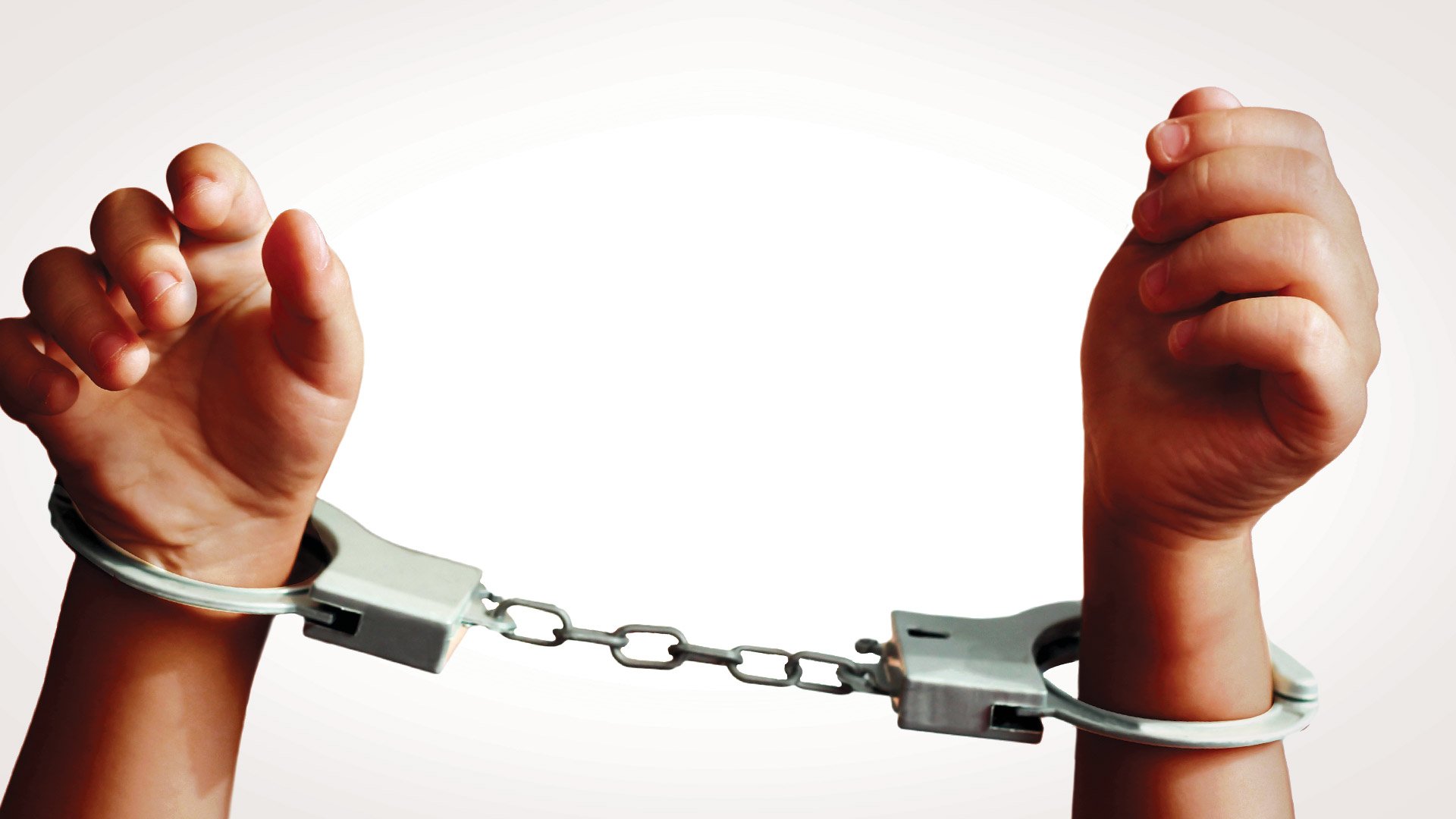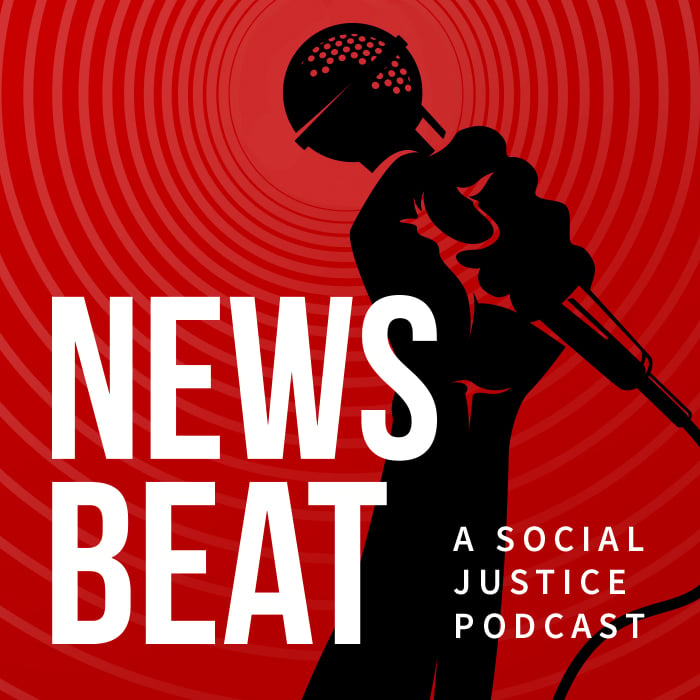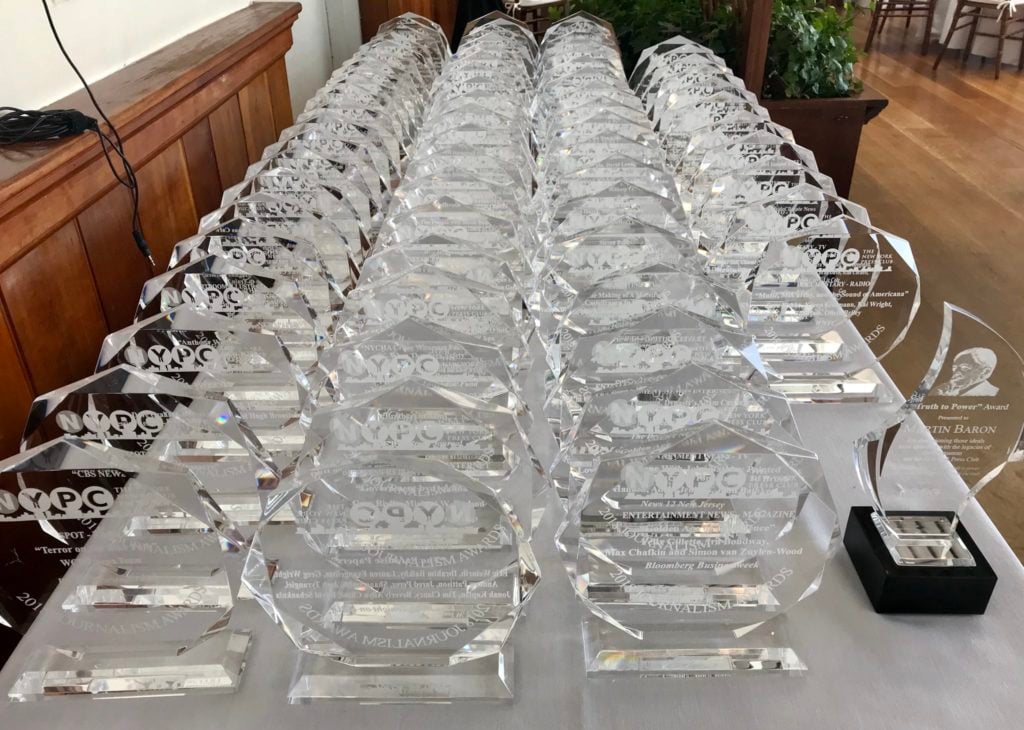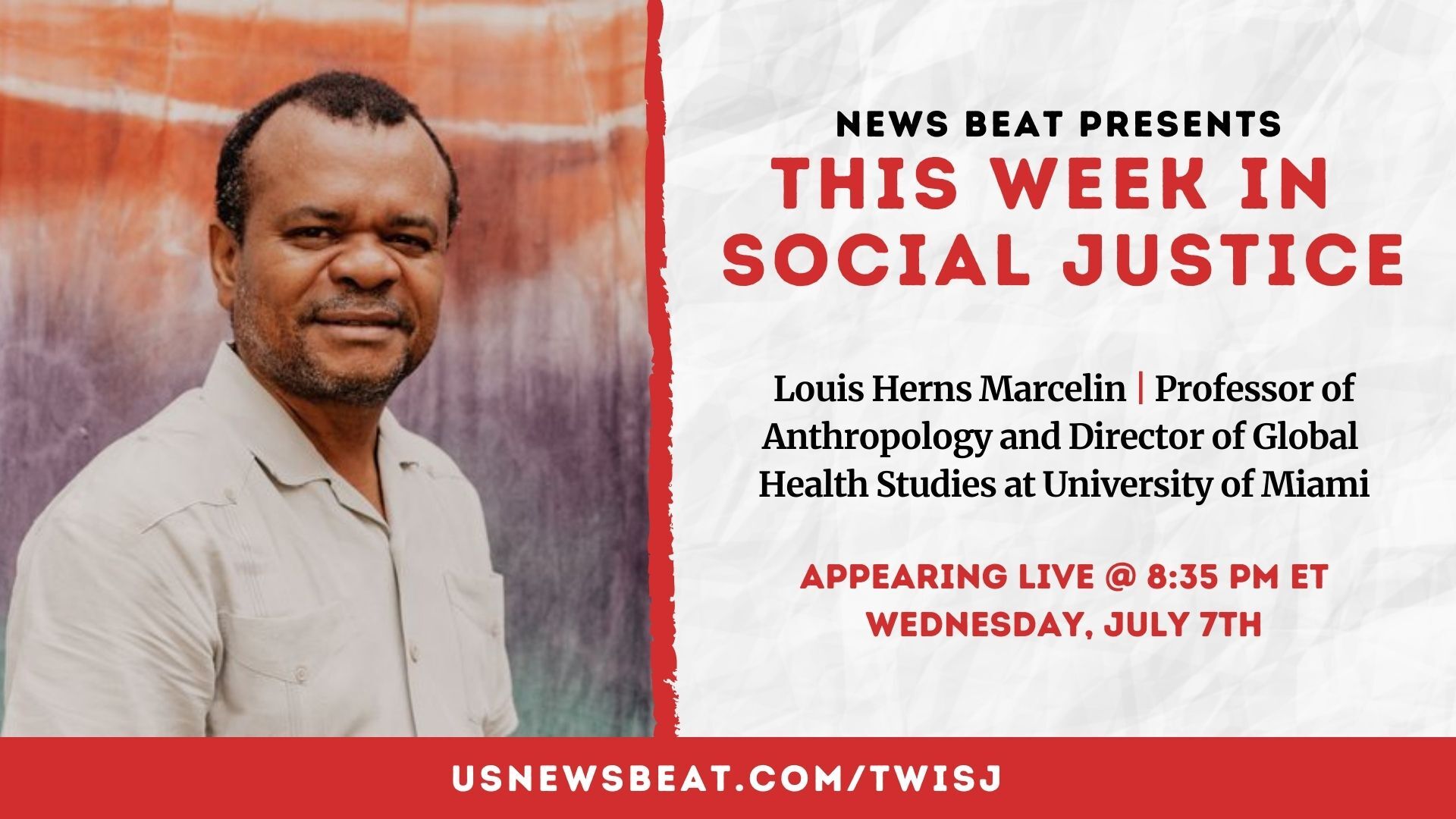
More than 1,800 incarcerated youth have been infected with the novel coronavirus (COVID-19), according to an analysis of six months of data compiled by the nonprofit The Sentencing Project.
In its report published this week, The Sentencing Project identified cases in at least 35 states, plus Washington, D.C. and Puerto Rico. Texas, Florida, California, Arizona and Tennessee had more than 100 cases each, with Texas and Florida recording greater than 300 virus-related infections.
The study’s author, however, acknowledged that the actual number of cases during that analyzed period is likely higher because of insufficient testing and reporting, noting that we still have an incomplete picture of the overall spread of the virus.
Here is audio from our interview about COVID-19 in juvenile detention centers. You can find a transcript at the bottom of this post.
COVID-19 in Juvenile Detention Centers
The report, titled “Youth Justice Under the Coronavirus,” written by Joshua Rovner, senior advocacy associate with The Sentencing Project, provides a more clear, though incomplete, assessment of COVID-19 inside the walls of these facilities.
Among the highlights:- According to data from 37 jurisdictions, there have been 1,805 known cases of COVID-19 in youth prisons in the first six months of the pandemic.
- Five states have recorded more than 100 cases.
- The states with most cases are Texas, Florida, California, Arizona and Tennessee.
- Four staffers at facilities in New York, Maryland and Texas have died from the disease.
- As in other correctional settings, it’s difficult to ascertain the true spread of the virus due to inadequate reporting from individual states and the private companies that operate some of these institutions.
- There has been a decline in admissions to youth prisons since the pandemic began. Opponents of youth confinement have long argued that there should be fewer kids incarcerated in the country, often citing high recidivism rates, staggering racial disparities, unsafe conditions and other deficiencies within the system.
After six months of tracking COVID-19 almost every day, here's what I've learned. https://t.co/q95rt6ngZc
— Josh Rovner (@JoshRovner) September 30, 2020
“In congregate care settings, this contagious pathogen’s spread was inevitable,” Rovner writes in the report. “States and localities have taken steps to mitigate COVID-19’s impact, including releasing confined youth, curtailing admissions, limiting visitation and programming, and isolating youth in a manner that mimics solitary confinement. Given the persistent racial and ethnic disparities in juvenile justice, there is little doubt that youth of color are suffering disproportionately from the virus and the changes within facilities that it has brought.”
More: How We're Covering COVID-19 Through a Social Justice Lens
The portrait Rovner paints within these correctional centers somewhat resembles the situation inside adult jails and prisons, which experts long warned easily promote the spread of highly infectious diseases. Adult correctional facilities have consistently ranked among the largest “clusters” of virus cases in America, according to an ongoing analysis by The New York Times.
As for youth prisons, advocates from the beginning have urged operators to do more to mitigate the spread of the disease. Earlier this year, Youth First Initiative, which argues for juvenile detention reform, said policymakers, courts and state agencies had not yet done enough to “prevent or fully control” the spread of the virus.
“Infection control is a challenge in these situations as incarcerated youth are often in large congregate and communal settings,” the group said. “Even if youth are in individual cells, ventilation is often inadequate. Youth do not have many options to stay away from other youth if they become ill and there are limited infirmary beds. If staff become ill, it will be difficult to provide care and support to youth and if lockdowns are utilized, that will only increase the virus infection rate. Detention and corrections staff may be afraid to go to work, call out sick or just not show up, and less staff means more incarcerated youth will be put into isolation which can exacerbate or create mental health issues.”
It added: “It is vital that we focus decision-makers on the health and safety of incarcerated youth.”
Youth First Initiative issued its own report detailing how some states were trying to mitigate the spread of the virus through early releases, including through the use of electronic monitoring, which raises other serious questions. In addition, the governors of two states—Colorado and Michigan—issued executive orders related to juvenile detention centers to limit the spread of COVID-19.
Rovner says the overall population of incarcerated youth continues to “tick downward” due to less arrests. Among the reasons for that early decline was school closures, which, he says, temporarily halted the "school-to-prison pipeline."
“There's fewer kids getting arrested, meaning fewer kids getting detained and later committed,” he tells News Beat. “But that initial drop has not sustained itself at all.”
There are an estimated 40,000 young people serving time across the United States in juvenile detention centers, a significant reduction from the more than 100,000 who were locked up in 1997. Still, there’s been a concerted effort to end the system of imprisoning young people.
As we reported in 2018, the United States spends billions each year to operate youth prisons. Despite the cost, the national recidivism rate among incarcerated youth has recently been as high as 75 percent. The system is also characterized by a significant racial disparity, with African American youth four-and-a-half times more likely to be incarcerated than their white counterparts. And despite the overall drop in incarcerees, young girls have made up a larger share of youth offenders.
As Mishi Faroque of Youth First Initiative said in our podcast episode about the juvenile justice system: “There’s basically two systems of justice in this country: There’s one system of justice for white, middle-class, upper-middle class youth, and there’s another system of justice for youth of color.”
Rovner argues that the virus-related releases underscore the need for permanent reform.
“I think we have real reason to hope that we’re looking at a new normal,” he tells News Beat.
“I really hope that we will continue to see jurisdictions around the country look much more carefully and limit the use of detention only to the kids who are presenting an immediate and serious threat to their communities,” Rovner adds.
“And that's not who is generally in detention centers. Detention centers are full of kids who violated the terms of their probation. Kids who committed what are called status offenses, things like skipping school, or incorrigibility, or, in some places, possessing cigarettes. They're full of kids with drug possession charges or shoplifting. This is not uncommon. And the idea that you would send a kid to a detention center to kill time just makes no sense…[T]hey do not work for the purpose of reducing recidivism. Generally speaking, when you have kids who've made contact with the justice system, they're not all that different than the kids who haven't made contact with the justice system.”
To learn more about COVID-19 in juvenile detention centers and recommendations to improve conditions, here’s our Q&A with Josh Rovner of The Sentencing Project, edited for clarity:
News Beat: Josh, can you just give me your main takeaways from the report?
Josha Rovner: “We've learned that there's more than 1,800 kids in these facilities who've tested positive over the last six months. And the main takeaway that I have is not only the medical impact on those kids and their families, because certainly, you know, this is a pretty tough disease to fight through. But my first main takeaway is that we don't really know the scope of the problem, because there's inadequate testing taking place and inadequate reporting of the cases that have, in fact, happened. So when I say 1,805, that's a low estimate that says conservative assumptions as I could possibly make, based on the information that I gathered. The second piece of information is regardless of whether kids have themselves tested positive or not, or whether there's any medical impact from this disease, is it there's all sorts of other impacts here, including the limitation of visitation from their families, ending programming, in some cases, widespread use of medical isolation that can mimic solitary confinement. So the impact of the disease goes beyond whatever the medical impact is, to the daily lives of the kids inside these facilities."
NB: Which states have had the highest number of cases? And do you have a sense of the infection rates in some of these facilities?
JR: “Well, let me go first by saying I don't know infection rates, because of the sort of normal churn of a facility. You know, so this is six plus months worth of data. And over any six-month period, you have a lot of kids going in and out. So let's say that you have a 50-bed facility and 10 kids test positive. That doesn't mean it's a 20% infection rate. In fact, if it's a detention center, over six months, there's gonna be a lot of kids who go in and out for three, four days at a time. So you can't really say that that sort of math, if you you look at the report, there's a list of the largest facilities—not the largest—the most cases per facility, and that's on page 10. You really don't want to say, you know, counted cases divided by capacity, to do that kind of thing. So just be cautious with that sort of math. As far as the states with the most, it's really about the states with the most that we know about. Florida and Texas have—they're at the top of the list. And they've probably been among the most transparent states. I had to push a little bit from Texas to get what's happening in the county-level facilities. But I was in fact able to gather it. Florida's posting what's happening in all of their facilities, public and private. And it's a pretty high incarceration state. So it makes sense that Texas and Florida are at the top. After that you have a set of states like California, Tennessee, Arizona, that round out the top five.”
NB: Early on in the pandemic, especially in jails and prisons, there was an effort to reduce the population inside those facilities. And I understand that the populations are much more significant than in juvenile detention centers, but did something similar occur in the early months of the pandemic? If so, did that continue?
JR: “Yeah, so the report highlights a couple of good examples of states that have in fact proactively released kids. We saw that in Michigan, in Colorado, and have some good data in the report to show exactly what happened in Colorado. That has been happening, as best as we can tell, in a lot of jurisdictions, pretty significant releases in the early months, but things have plateaued in the months since. In many cases, the numbers continue to tick downward because youth arrests are down. The sort of front door of the facilities is police interactions and arrests. And particularly with schools closed, you've seen the school-to-prison pipeline interrupted. And so there's fewer kids getting arrested, meaning fewer kids getting detained and later committed. But that initial drop has not sustained itself at all.”
NB: With decarceration, whether it happened organically to minimize the risk and the spread of the disease, what does that tell you about what we can do going forward? What does this tell you about that effort and how that can continue past the pandemic, however long that goes on for?
JR: “I think we have real reason to hope that we're looking at a new normal. There are jurisdictions around the country that are looking closely at the decision to detain kids. That's the juvenile systems equivalent to jail, you haven't been found responsible for anything yet. And so the decision of, 'Do I need to detain this kid?' And I really hope that we will continue to see jurisdictions around the country look much more carefully and limit the use of detention only to the kids who who are presenting an immediate and serious threat to their communities. And that's not who is generally in detention centers. Detention centers are full of kids who violated the terms of their probation. Kids who committed what are called 'status offenses,' things like skipping school, or incorrigibility, or, in some places, possessing cigarettes. They're full of kids with drug possession charges or shoplifting. This is not uncommon. And the idea that you would send a kid to a detention center to kill time just makes no sense. As you said, these are factories of failure, they do not work for the purpose of reducing recidivism. Generally speaking, when you have kids who've made contact with the justice system, they're not all that different than the kids who haven't made contact with the justice system; the kinds of things that I just mentioned, the skipping school, drug possession, occasional shoplifting, those are things that teenagers do and things that teenagers grow out of. But that's not who we lock up in this country. To a huge extent, we lock up kids who who're accused of or committed those mid-level or less serious offenses.”
NB: Can you talk about what the rules were for an outbreak inside any of these facilities? Were kids being put in isolation?
JR: “Yeah, so there's so many facilities in this country that there's no simple answer to the question. I think a general process that I've seen in tracking this is that someone may test positive, a staff member who works in the facility or a kid comes into the facility being positive, and they'll put everyone who was in contact with that person in isolation. For the staff, that means going home for two weeks and waiting for symptoms to appear or not appear. And for kids to a huge extent, that means being isolated. And the impact of isolation is really terrible on these kids. The reason that you send a kid into any sort of long-term commitment facility is to connect them with programming. The reason that we have a juvenile justice system, apart from the criminal justice system, they're supposed to be connected to programming, you know, along the lines of anger management, drug counseling, the various therapy that can happen. And once you put them in isolation, none of that can happen anymore. We also know that isolation in and of itself is very damaging. Solitary confinement has been considered akin to torture. It is absolutely damaging to all of us, but especially to teenage brains who need support and to be around other people even more. The widespread use of isolation that may be equivalent to solitary confinement is something that should concern us all.”
NB: Can you talk about the racial disparities? Obviously, I think you outlined in the report that African American youth are four times more likely to be incarcerated in these facilities than their white counterparts. And I know the data is hard to get, especially with HIPAA laws. So are we able to identify any racial disparities in infections?
JR: “Yeah, so the data that we have on racial disparities is overwhelming and outrageous. As you say, youths of color are much more likely to be incarcerated than white youth are. For African American youth, it's about four-and-a-half times as likely. And for Latino youth, it's about 80% more likely, Native youth three times as likely. Now those are stale data—we don't do a great job tracking what happens in this in these facilities, despite the fact that you can't run a locked facility without counting the kids four times a day, right? Someone knows exactly how many kids are in these facilities. And they know what gender they are, and they know what they did to get there. And they know what their race or ethnicity is. But that data is so bogged down in the reporting process, that we don't have regular updates on that, and one of my recommendations and one of the things that I've learned from this report is the need to have more frequent and frequently updated data on race, ethnicity and everything else that I just listed. So do we know who's getting infected in these facilities based on race and ethnicity? The answer is no. This has not been something that's been reported. I think that there is no reason whatsoever to doubt that the disparities that we see outside the facilities, where people of color are being harmed much more by the virus than white people have been, are repeated inside the facilities, moreso because of the disparities in juvenile incarceration that we already knew about pre-pandemic. There's no evidence that those disparities have improved, and in fact, they're more likely to have gotten worse during the pandemic.”
NB: You also noted in the report that there is a number of private youth prisons in this country. And I'm just wondering if you can tell us about how difficult it may have been to gather data from those institutions?
JR: “What's interesting to me about the private facilities is that I found out about them—the large outbreaks in the private facilities—because of a couple of states reporting this information, and me being able to get a handle on that. Tennessee and Florida, those are the ones that come to mind. Tennessee and Florida are the ones that should be pointed out. But the fact that Florida has been transparent about the cases has highlighted the number of cases in facilities run by Youth Opportunity Investments, by Sequel Youth and Family Services. But those companies that are running for-profit juvenile prisons, they have websites, and if you go to their websites, you'll see something that says, here's what we're doing about COVID-19. And it is meaningless blather that they should be ashamed about. They lock up a lot of kids in this country, and they do it on the public dime. They have a responsibility to the public, and they have a responsibility to families to see exactly what's happening in these facilities. And the black box of information from private facilities is absolutely shameful.”
NB: Can you just go through some of the recommendations that you included in here?
JR: “The first recommendation is to absolutely limit the use of incarceration in this country, we lock up to many kids for too long for no good reason. And it's an if it is an effective policy solutions to real problems in these kids lines. The second is that we need to be much more transparent about the number of kids we're locking up and for how long. The third recommendation is to make sure that if isolation is necessary, that kids are not being isolated from their families or from programming, and that isolation is being supervised by medical personnel and not by corrections personnel. I think those are the three essential recommendations about stemming the use of incarceration, the conditions in the facilities and making sure that we have a clear sense of what's happening in facilities with the virus and otherwise.”
NB: I think most of the deaths associated with these facilities have been staff members. Can you talk about what you found there?
JR: “I am aware of four staff members who work in these facilities who passed away. One of the stories that really got my attention was a man named Sean Wilson, who worked at the Giddings State School in Texas and after he passed away the Texas Juvenile Justice Department then decided to make the decision to test all of the staff in their state-run facilities and all the youth living in their state-run facilities, and found hundreds of cases. I mean, this is why Texas is at the top of the list. It didn't have to be that way. You know, widespread testing before the tragedy occurs can prevent tragedies from occurring. I have a precise number, it's over 2,500 [staff infections]. Again, those are the cases that we know about, those are the ones that have been reported. There's staff that don't work into facilities who work in juvenile justice departments, and you know, the way the virus has spread, they don't really care what the walls of the facilities where they are. But I have only counted to get to that 2,500-plus people who work in the facilities, doing my best to make conservative assumptions there.”



.jpg)





